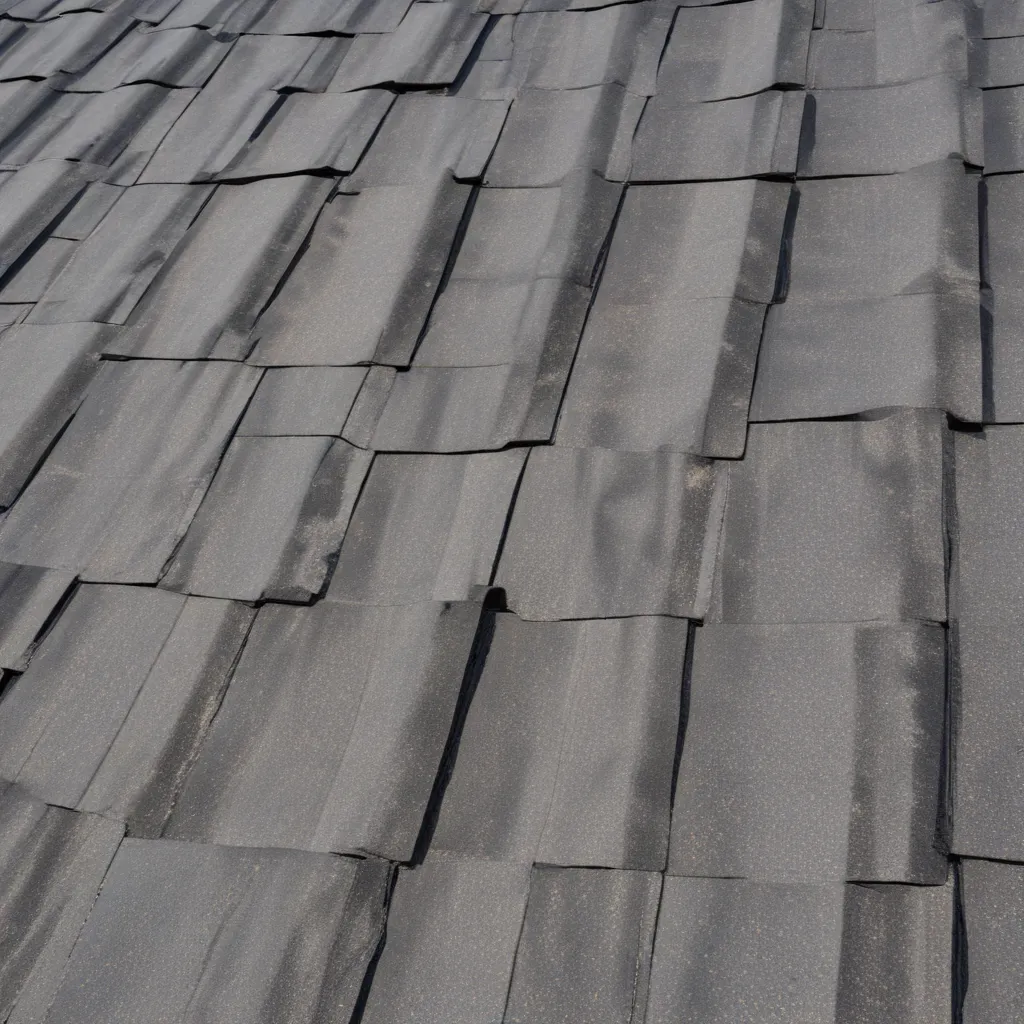
When it comes to protecting your home or building from the elements, the roof underlayment plays a crucial role. As an experienced roofing specialist, I understand that the choice of underlayment can make all the difference in the long-term performance and durability of your roofing system. In this comprehensive article, we’ll explore the various types of roof underlayment, the factors to consider when selecting the right one, and the principles of ensuring optimal waterproofing protection.
Types of Roof Underlayment
The three primary types of roof underlayment are synthetic underlayment, asphalt-saturated felt, and self-adhered underlayment. Each type offers distinct characteristics and benefits, making them suitable for different roofing applications and environmental conditions.
Synthetic Underlayment: These underlayments are typically made from lightweight, durable materials like polypropylene or polyethylene. They are known for their resistance to tearing, puncturing, and UV degradation, ensuring long-lasting performance. Synthetic underlayments are often the preferred choice for their ease of installation and superior weather resistance.
Asphalt-Saturated Felt: Also known as tar paper, this traditional underlayment option is made from an organic or fiberglass base saturated with asphalt. While it is an economical choice, felt underlayment is less durable and more susceptible to moisture-related issues, especially in regions with harsh climates.
Self-Adhered Underlayment: These premium underlayments feature a self-adhesive backing that allows them to stick directly to the roof deck, creating a watertight seal. This type of underlayment is particularly effective in preventing leaks and is often the go-to choice for areas prone to heavy rainfall or ice dams.
Factors in Underlayment Selection
When choosing the right roof underlayment, several crucial factors must be considered to ensure optimal performance and protection for your roofing system.
Climate and Weather Conditions
The climate and weather patterns in your local area play a significant role in determining the most suitable underlayment. In regions with heavy rainfall, high humidity, or frequent storms, a highly durable and waterproof underlayment, such as a self-adhered membrane or a premium synthetic option, is often the best choice. Conversely, in drier climates, a more cost-effective felt underlayment may be sufficient.
Roof Slope and Exposure
The slope of your roof also influences the type of underlayment required. Steeper roofs, where water and snow runoff quickly, may allow for the use of a lighter underlayment. However, for low-slope or flat roofs that are more prone to water pooling, a more robust and waterproof underlayment is necessary.
Building Code Requirements
Building codes in your region may have specific requirements for roof underlayment. It’s essential to choose an underlayment that not only meets but exceeds these codes to ensure the long-term durability and safety of your roofing system. In Florida, for example, the strict building codes are designed to safeguard homes against the state’s severe weather conditions, including hurricanes.
Waterproofing Principles for Roof Underlayment
Ensuring optimal waterproofing protection is a critical function of the roof underlayment. Let’s explore the key principles that contribute to this crucial aspect of your roofing system.
Moisture Barrier Properties
The underlayment should act as an effective barrier against water and moisture infiltration, preventing leaks and protecting the roof deck. This is achieved through a combination of vapor permeability, which allows the roof assembly to “breathe,” and superior water resistance, ensuring that any moisture is effectively channeled away from the building’s interior.
Durability and Longevity
The chosen underlayment must be able to withstand the rigors of the local climate, including exposure to UV rays, extreme temperatures, and physical stress. Factors such as tear strength, puncture resistance, and long-term performance under harsh conditions are essential in ensuring the underlayment’s durability and longevity.
Installation Techniques
Proper installation of the underlayment is paramount in achieving its intended waterproofing benefits. This includes techniques such as appropriate lapping and sealing of seams, as well as the proper flashing of roof penetrations, to create a cohesive and watertight barrier.
Performance Evaluation of Roof Underlayment
When evaluating the performance of roof underlayment, it’s crucial to consider industry standards, testing protocols, and comparative analysis to make an informed decision.
Industry Standards and Testing
Reputable manufacturers of roof underlayment often adhere to ASTM (American Society for Testing and Materials) specifications and obtain ICC (International Code Council) Evaluation Reports. These third-party certifications provide valuable insights into the product’s compliance with building codes and its overall performance characteristics.
Comparative Analysis
Comparing the performance metrics of different underlayment options, such as water resistance, tear strength, and UV resistance, can help you make a more informed choice. Additionally, understanding the cost-effectiveness of each option, including initial investment and long-term maintenance requirements, can assist in striking the right balance between performance and budget.
Optimal Underlayment Selection Process
Selecting the optimal roof underlayment for your project involves a careful assessment of your specific requirements, a thorough evaluation of performance and cost factors, and collaboration with industry experts.
Assessing Project Requirements
Begin by evaluating the unique characteristics of your roofing system, including the type of roofing material, the slope and exposure of your roof, and the local climate conditions. This information will guide you in identifying the most suitable underlayment for your needs.
Balancing Performance and Budget
While it’s tempting to choose the least expensive option, it’s crucial to weigh the long-term benefits and potential cost savings of investing in a higher-performing underlayment. Conduct a cost-benefit analysis and consider the product’s warranty coverage to ensure you’re making a well-informed decision.
Consulting Industry Experts
Manufacturers of roof underlayment often provide detailed guidance on selecting the appropriate product for your specific application. Additionally, consulting with experienced roofing contractors can provide valuable insights and recommendations based on their expertise and knowledge of local building practices and regulations.
By carefully considering the factors outlined in this article and following a comprehensive selection process, you can ensure that your roof underlayment provides optimal waterproofing protection, enhancing the overall durability and performance of your roofing system. For more information on genuine roofing solutions, visit https://www.genuineroofsystems.com.

























